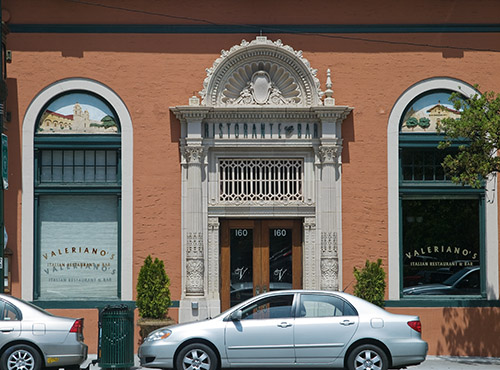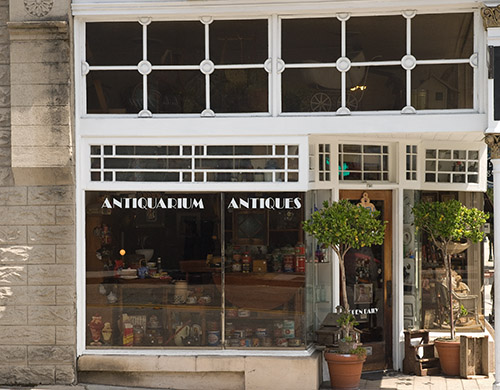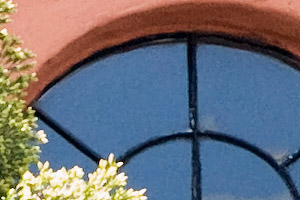5/27/2008 Field Experience and 2 Galleries
Over the last 2 weeks we used the Olympus as second camera for our work. Overall we are very pleased using the E-3.
Here are some findings:
Lenses
With only 3 zooms we get a reach from 14-400mm. Important to note is that this means you have good optical quality over this full focal range. Good quality means: These are zooms and not primes. Still these zooms deliver very good quality optics. Using them is a lot of fun because the lenses feel right. Of course they are not cheap but worth their price.
7-14mm f/4
We normally don't use wide-angle lenses. The Olympus 7-14mm f/4 got us hooked. What a nice lens. Yes it is expensive but not more than the competition.

@7mm (14mm 135 equivalent)

@10mm (20mm 135 equivalent)
Both shots were perspective corrected in PTLens (Mac). But the distortion was actually not that bad for an extreme wide-angle lens. Both photo requested a wide angle lens of this range.
12-60mm f/2.8-4.0
This is just a wonderful zoom (good contrast and no strong distortions). I doubt there are many 5x zooms on the market that perform this well.

12-60mm + remote flash
For this photo we used a small external Olympus flash that was controlled via the E-3 on-camera flash. Works very well for us.
50-200mm f/2.8-3.5
Likely also one of the best lenses with such a wide range.

50-200mm (100-400mm 135 equivalent)
Sometimes the use of a monopod could be helpful with this lens because the viewfinder image is not stabilized by the in camera sensor IS. It is not easy to compose freehand at the 200-400mm (135 equivalents) range.
Flash
The on camera flash can control other Olympus external flash units. No extra transmitter needed. We used it briefly and it is easy to use.
IS (image Stabilization)
In camera sensor IS works. We miss sometimes the stabilization of the viewfinder image which we get from optical IS/VR systems.
AF (Auto Focus)
The E-3 AF needs strong edges to perform well. We have AF hunting more often than with other systems.
Exposure
We use our "Capture more Light" technique and shoot 3 exposure brackets most of the time (except with flash). With our other cameras the middle exposure is ok about 90% of the time. With the E-3 we often need the +1EV exposure. Overall no big problem using our method though.
Handling
Handling is very good and we never feel slowed down by the E-3.
Galleries
Over the past 2 weeks we shot quite a few photos that will be part of our main portfolios. here are the first 2 Galleries:
Olympus E-3 Gallery #1
Olympus E-3 Gallery #2
Second Conclusion
The Olympus E-3 is a big surprise for us. The E-3 is fun to use because of:
- Good handling
- Wonderful zooms
- Nice flash system
With some cameras we test we are happy to go back to our own cameras (which are more in the high end range). We don't get this feeling with the E-3. The E-3 is a welcome addition to our arsenal with many strong points.
5/11/2008 Diary Start
We finally got in an Olympus E-3 for review. Olympus made many changes in the E-3 compared to the old E-1. The main new features are:
- Sensor based image stabilization
- 10MP
- Live view
- Improved viewfinder
We like a lot
- Handles excellent and feels very solid
- Swivel LCD (kind of a must for Live View cameras)
- Very responsive
- Excellent bright viewfinder
- Excellent lenses available. We love the E-3 combined with the 12-60mm f/2.8-4.0 (24-120mm 135 equivalent) and the 50-200mm f/2.8-3.5 (100-400mm 135 equivalent). With just two lenses you cover 24-400mm (135 equivalent) with zooms of very high quality and excellent wide maximum aperture. Due the the camera image stabilization these lenses are also supported with image stabilization. In some way the 50-200mm f/2.8-3.5 is a dream lens.

E-3 with the 50-200mm f/2.8-3.5
Maybe an issue
- It seems that the E-3 has a strong AA filter which may prevent resolving very fine detail
- The E-3 may need better latitude in the highlights
- No 14-bit RAW
We don't like that much
- Histogram is hard to read because it is too small. They should have a fine line around the single channel histograms of even better make them mugh larger.
- We were never impressed by the Olympus Master RAW converter. No big deal because we use Lightroom 1.4 and Adobe Camera Raw 4.4.
- AF hunts sometimes if no good edges are found
Note on Diffraction limits and the E-3: If you look at lens tests for top Olympus zooms (here at DPReview) you can find that the E-3 maybe already diffraction limited at about f/8 (means the camera cannot resove at full sensor resolution). This means the camera should be better used at about f6.3 max. This is not a problem with good lenses (and Olympus has some fine zooms) and the DOF with small sensors is higher anyway. To better understand what diffraction limits mean you should read this article.
Note on mechanical lens quality: The mechanical lens quality is hard to demonstrate in terms of image quality. Handling a good built lens gives you more confidence that the lens is of good quality. The top Olympus zooms feel just right because they are very well crafted.
Los Gatos test shots

Ristorante @ISO 100

Crop @100% magnification
We used the excellent Olympus 12-60mm (24-120mm 135 equivalent). This lens shows a very high contrast what is a sign of its high quality. Very good start we would say, nothing wrong to our eyes here. The E-3 clips highlights harsher than the new DSLRs from Canon and Nikon. We would likely try to underexpose the shots in situations like this by about -2/3 EV.
Note: We used f/8 but should have used lower f-stop (read about diffraction limits above).
You can download the original RAW from here (about 9 MB).
Note: Remember that the service we provide is financed
by selling our ebooks and PS
tools. Also direct donations are welcome.

Antique store @ ISO 400

@ 100% magnification
Very little noise in the shadows at ISO 400.
ISO Test
We converted with ACR 4.4 (luminance noise
removal set to zero) and then sharpened with the same level in DOP EasyD DetailResolver 1.0 .
Note: EasyD DetailResolver shows both more detail and more grain although we activated the Noise Mask option. This way we can see how much real detail is available.

Bear Coffee Shop
Olympus E-3 |
| |

ISO
100 |

ISO
200
|

ISO 400 |

ISO 800 |

ISO 1600 |

ISO 3200 |
All these shots are with luminance noise removal off in camera
(as much as the user can control this) and raw converter (color noise removal was at default). ISO 100-400 very good.
ISO 800 is quite usable too. ISO 1600 in some cases usable (e.g. B&W) and ISO 3200 is quite noisy as expected for a small sensor like this.
Overall these are the best results we have seen from any Olympus DSLR.
Note: Because we use now also the DOP EasyD DetailResolver (with Noise Mask activated) noise is even more visible than in a plain converversion.
With most cameras today we feel that ISO 100-400 defines our comfort zone. This means we use this range without any further thought. We have the feeling that with the E-3 we can risk ISO 400. It is also quite important to note that small sensor cameras produce a higher DOF (depth of field) and this means you can use wider apertures to keep the ISO down.
Note about high ISO noise: Many people ask why they should worry about noise at ISO 400 or more if they only use 200 ISO at max. This is of course a good question. In the past we did not care either. Then we changed our photographic style and make now often use of Tonemapping (learn more about HDR and Tonemapping). During this process we brighten the shadows and this brings out the noise otherwise seen at way higher ISO. It often starts to matter at even ISO 200 photos.
Note about frame rate: We hardly photograph action and still we find the high frame rate very important. Why? We shoot high speed exposure brackets freehand. Please read this article for our motivation behind high speed brackets. We find that the E-3 at about 5.0 fps is works very well for our technique.
First conclusions
It is hard not to love this camera. This is the first camera that really delivers on the Four Thirds promises:
- Camera is not small or light but smaller/lighter than other cameras at this professional level
- Same is true for the lenses: In their quality range they are smaller and lighter. They are by no means cheap but still cheaper than the competion at the same quality level.
Take the 12-60mm f/2.8-4.0 lens and you cover the excellent range of 24-120mm (135 equivalent) with a good max aperture. The 50-200mm f/2.8-3.5 lens is in a league of it own.
This is the first Olympus DSLR that feels very responsive.
We have to live with the not so optimal histograms and also check how to deal with highlight clipping. Overall we are very positive surprised. |